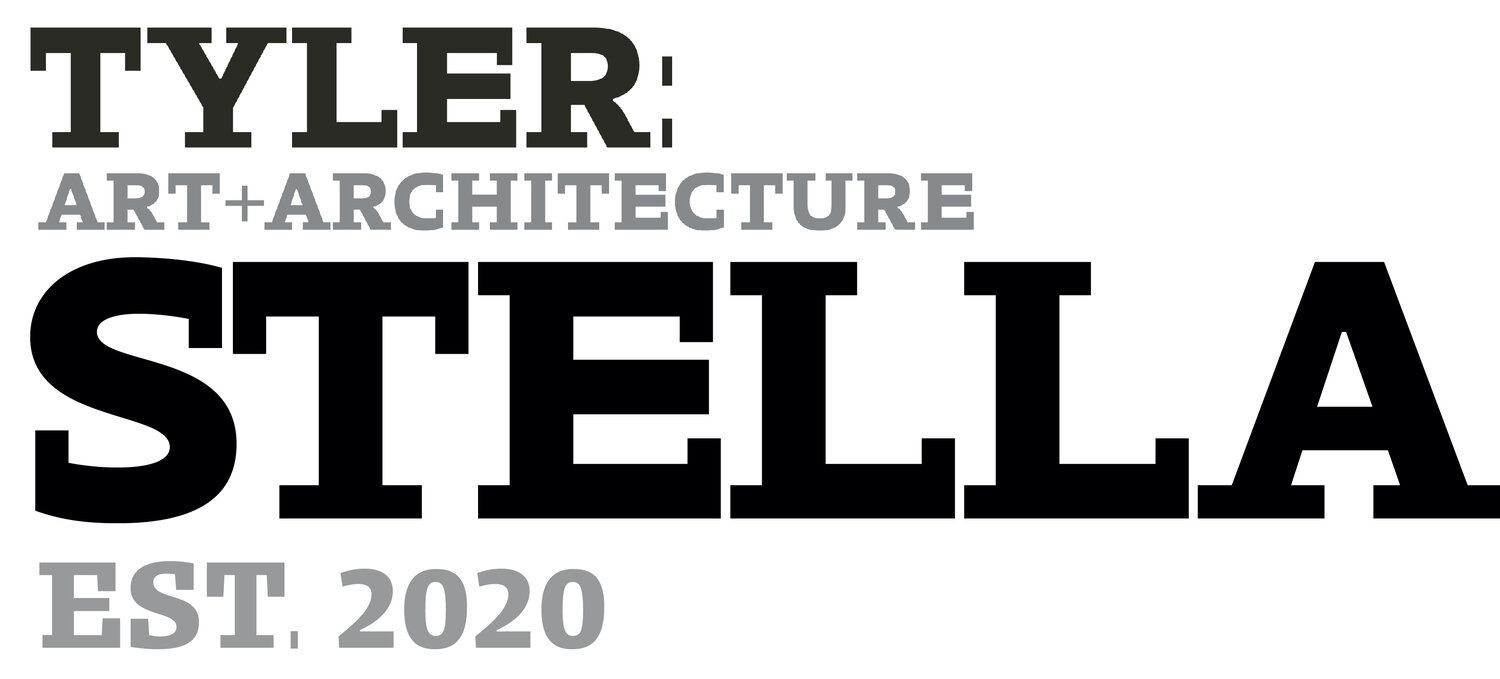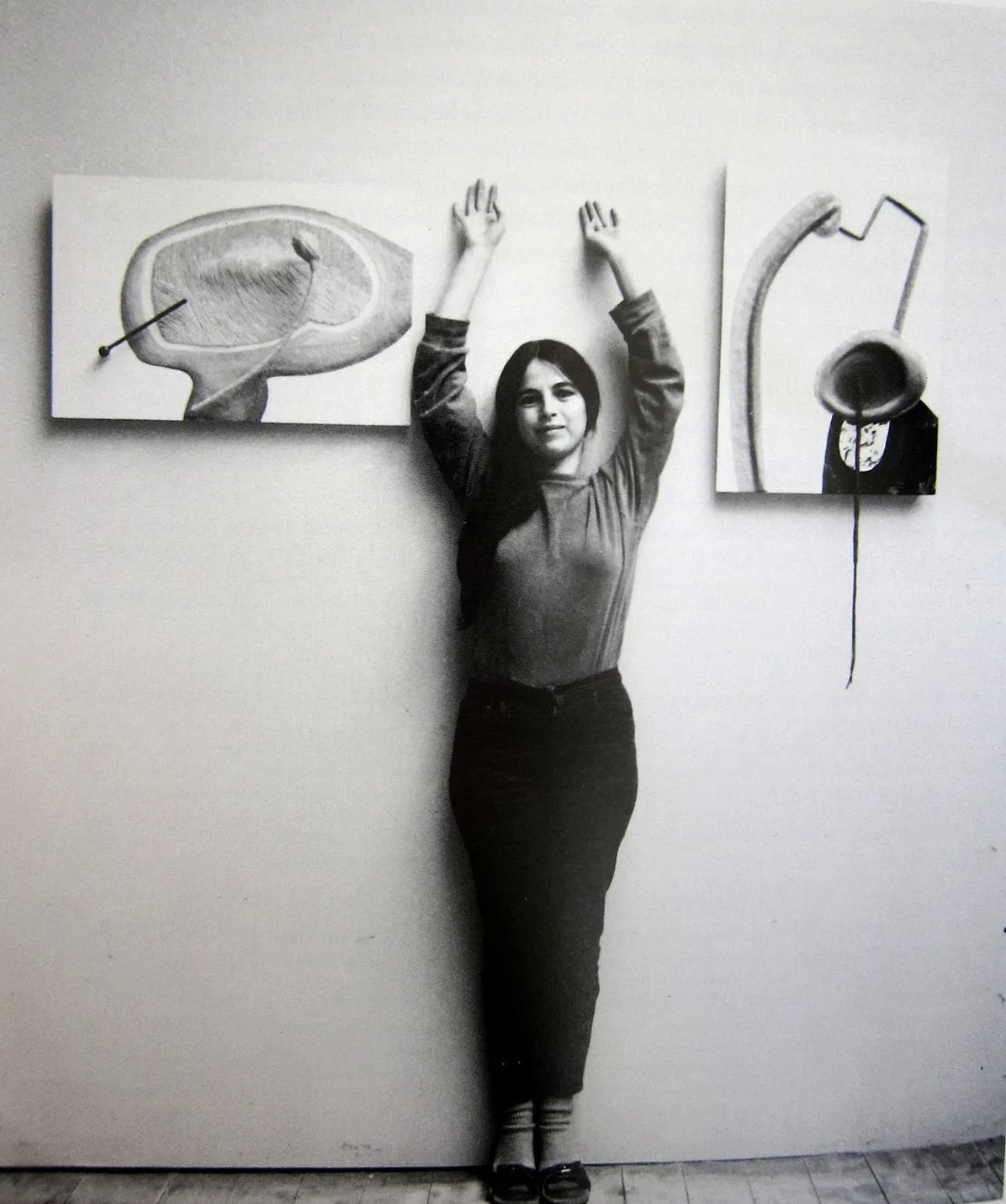Shayna Alexis Pfeiffer
The Short and Storied Life of Eva Hesse (1936-1970)
Born in Hamburg, Germany in 1936, Hesse fled Nazi occupation as an infant. She lost both of her parents by her twenties (her mother died from suicide), and this led to mental health complications throughout her life. She went on to study art at Yale University under Josef Albers and married artist Tom Doyle (and divorced) only to take the New York art world by storm with her designs that were neither painting nor sculpture (her 1st solo exhibition was at the Fishbach in 1968). Hesse existed in a male dominated world of minimalists but was able to persevere and conquer in a world that was rapidly changing in the 1960's. By 1969, she was diagnosed with a brain tumor but sadly passed away in 1970 due to complications. Her short, storied life is inspiring for any artist and her expansive collection is a magnificent sight to behold for years to come.
Eva Hesse (1936-1970), Hang Up, Acrylic on Cord over Steel Tube and Acrylic on Cloth over Wood, Art Institute of Chicago.Using collapsing space, Hesse’s Hang Up is humorous and absurd but resonates on a psychological level with a theme of transience and pathos to it.
The use of unconventional materials in this work enabled Hesse to stand out from her male counterparts.
In Hang Up, Hesse is conveying an ironic commentary on painting. Hang Up consists of a frame used as a hanging device complete with an awkward cord that extends playfully through the work. There is a soft/hard texture within the work's materials which contradicts the overall meaning of the piece giving viewers their own interpretation of the work.
Hang Up connects the viewer through communication and connection. The overall meaning of the piece is ambiguous and mysterious. There is a hybrid of several components that consist of sculpture, line and color within the artwork. The conventional relationship between line, plane and space combined with the awkward loop of cloth wrapped metal creates an unexpected three-dimensional effect as if it is moving away from the wall by occupying traditional space.
When Hang Up debuted in 1966, it shook the New York City art scene. It was not exactly a painting nor a sculpture. As a female in a male dominated art world, Hesse was in a class of her own creating art that one might say is post-minimalism. Although not explicitly expressed Hesse was an innovator and a feminist in a world that was quickly changing and moving in different directions in the 1960’s.
Eva Hesse (1936-1970) Ring around Rosie (1965) latex, polymer, resin, fiberglass and rope on paper Mache Masonite board, The Museum of Modern Art, New York. This piece was dedicated to friend Rosalyn Goldman when she became pregnant. Rosie consists of a tightly wound rope woven in a circular fashion onto a protruding structure. Symbolically, Rosie stood out in contrast to the male dominated impersonal, symmetric forms of minimalism. Rope is associated with industry and masculinity and knitting and weaving are traditionally perceived as female.
Hesse exudes warmth, sexuality and sensuality in the work. There is a surreal component to the piece in terms of its perspective. Hesse remarked to friend artist Sol LeWitt in a letter that Rosie was a “breast job” with one white nipple and one pink nipple. She also described the work as a “breast penis to him”.
Hesse frequently explores themes of gender roles and tension in her art. Her ex-husband artist Tom Doyle and their contentious relationship also serve the basis for this work.
Rosie was one of 14 artworks constructed in Germany where she was living and feeling displaced with ex-husband artist Tom Doyle up until their divorce in 1964. After 1964 she returned to the United States to take the art world by storm.
“Art and life are inseparable”-Eva Hesse
Accession II has been described as post-minimalism. The minimalist geometric forms with grid patterns have rubber inside.
Symbolically, the rigid masculine forms (unsafe-outside) combined with the rubberized internal materials create a more expansive work. In Accession II, Hesse was defining that women have two different places in the art world (1 consisting of artist and 1 as a woman). Hesse was not a defined feminist however; sources say that she was aware of Betty Freidan as she circumvented a male dominated art world.
Overall, Accession II is a simple cube with a grid on the outside (controlled/fixed) externally. Internally (inside gravity, different directions) the complexity of womanhood is addressed along with a chaotic feeling inside as Hesse battled mental health issues at a time when they weren’t discussed.
“Excellence has no sex”-Eva Hesse
Eva Hesse (1936-1970) Accession II (1967-68), 1 of 4 galvanized steel boxes with rubber tubes inside, Detroit Institute of the Arts.Eva Hesse (1936-1970), Repetition Nineteen III (1968), Fiberglass and poly-resin sculpture, Museum of Modern Art, New York.Repetition consists of handmade, bucket-like forms (19 units of poly-resin installation variants) that are see through (clear) and stand 20 inches in height and sit on the floor easily. No one had used fiberglass in art before.
Symbolically, Repetition symbolizes the world that surrounds her. The buckets represent clear and internal thoughts and are considered post-minimal.
Eva Hesse (1936-1970) Expanded Expansion (1969) Fiberglass, poly-resin, latex and cheese cloth, Guggenheim, Final Work.Hesse battled depression and health issues before her death of a brain tumor in 1970. The concept of impermanence and decomposition (she was not too concerned about the permanence of materials and favored materials that decompose) resonated in many of her final constructs.
Expansion is abstract and sensual while rejecting minimalist sculpture for volume, mass and verticality.
Art was a duality of strength for Hesse (flexibility and vulnerability). Opposites unite in the work materially: fiberglass poles with accordion shaped curtain that can be compressed or extended creating a duality. Latex represents the physicality of human flesh in the piece and the definition of sculpture consisting of the body's themes, fragility and gravity.
It is also important to note that latex gets rigid and changes color over time. In 1968, the latex was supple. Her use of unconventional materials was innovative. In 2022, the Guggenheim restored the installation to its previous grandeur.
“Life doesn’t last. Art doesn’t last”-Eva Hesse
Shayna Alexis Pfeiffer
(she/her)
Art History ‘24
Born in Philadelphia to hippie parents with a love for the Beatles and Psychedelic art (like Peter Max), Shayna always has had a passion for art, fashion, 60's/70's culture, animals, good old rock and roll and standup comedy.
Shayna occupies her time by creating artwork most notable, watercolors and sculptures however, it is important to note that she enjoys working with Autistic children by creating murals and working to develop their sensory skills using art therapy techniques (which build self esteem).
Looking to the future, Shayna is graduating from Tyler School of Art in Spring 2024 and she hopes to continue her studies in the fine arts. Her favorite artist Eva Hesse (1936-1970) is the inspiration for her work and capstone project.
"Art and Life are inseparable."-Eva Hesse
Good luck to everyone and the class of 2024!!








